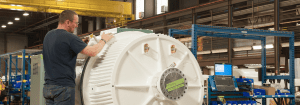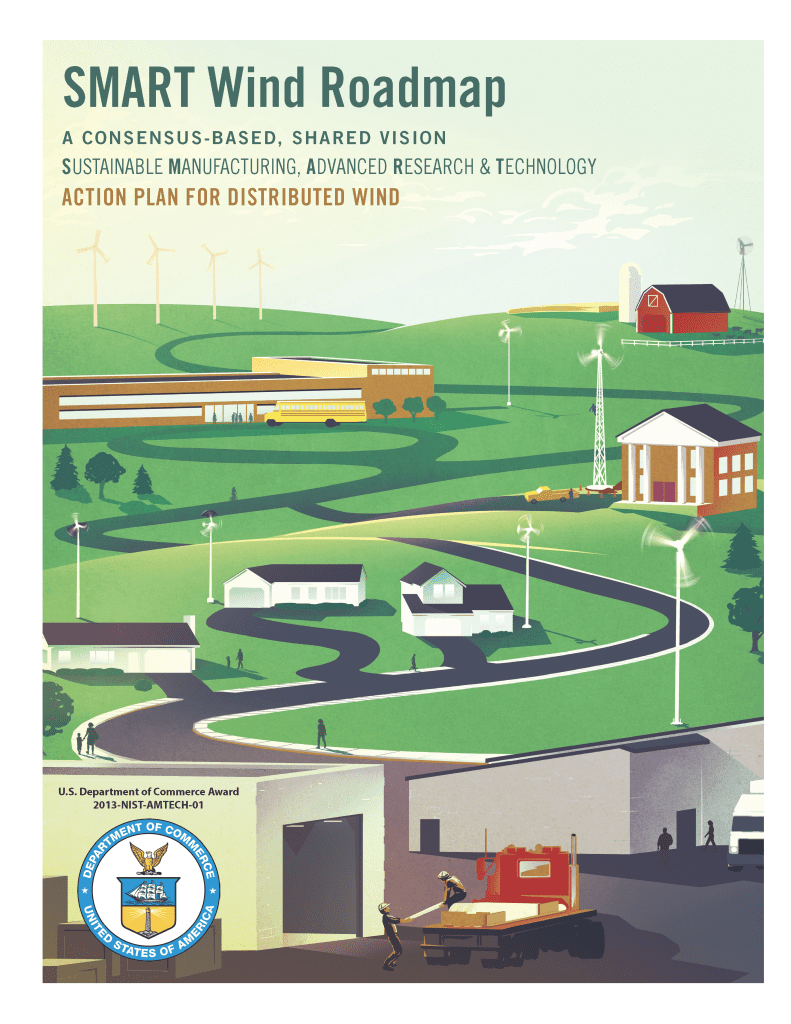Sustainable Manufacturing, Advanced Research and Technology (SMART)
Wind Consortium Overview
Roadmap | Project Intro | Meet the Team | Past Event Materials
Frequently Asked Questions
The Distributed Wind Energy Association (DWEA) team was one of 19 selected by the U.S. Department of Commerce National Institute of Standards and Technology (NIST) to participate in the Advanced Manufacturing Technology Consortia (AMTech) program, intended to establish new or strengthen existing industry-driven consortia that address high-priority research challenges impeding the growth of advanced manufacturing in the United States.
The DWEA team proposed developing a distributed wind industry Roadmap focused on reducing the cost of goods sold through improved manufacturing and processes, as well as refined engineering design. The project scope was 2 years. The team conducted face-to-face meetings (from November 2014 through February 2016) and Virtual Meetings with members of four Consortium subgroups:
- Mechanical subsystems
- Support structures
- Electrical subsystems
- Composite subsystems
Each of these Consortia groups include university and laboratory researchers, U.S. distributed wind original equipment manufacturers (OEMs), manufacturing extension partners, and U.S. component manufacturers. The goal of the initial meetings was to become acquainted with the interested stakeholders and to brainstorm possible cost-reducing strategies that will lead to evolutionary product and manufacturing improvements.
Discussion topics for each Subgroup included considerations of the latest design research, lean manufacturing techniques, and sourcing of raw materials. Metrics were created providing anonymity for participants through consolidated and normalized distributed wind manufacturing specifics. Understanding of component part “build or make” decisions, exploded views of existing commercial distributed wind turbines, and a general understanding of challenges and hurdles helped guide discussions on lean manufacturing strategies to lower the cost of goods sold.
At the launch meeting in October 2014 in Albany, New York, the project scope, structure, and participants was identified. All U.S. companies, manufacturing experts, national laboratories, and universities are invited to participate.
The major deliverable is the SMART Wind Roadmap provided for consideration to government agencies and other stakeholders for future funding. The final consensus-based Roadmap was published in May 2016.
Why is the NIST AMTech project important to the U.S. distributed wind industry?
The demand for renewable energy technologies is growing worldwide, particularly in locations without a centralized utility grid. Global competitors are developing new wind turbines that will likely put cost-competitive pressure on the U.S. micro distributed wind industry. U.S. leadership of installed distributed wind capacity is tenuous as other countries develop markets that incentivize wind turbine production at the lowest cost.
NIST has been involved in helping U.S. manufacturers compete globally through improved manufacturing processes, but there has never been a targeted effort to bring distributed wind OEMs, U.S. component manufacturers, and NIST/AMTech and NIST Hollings Manufacturing Extension Partnerships (MEP) together to ramp up manufacturing competitiveness.
The SMART Wind Consortium has brought together a wide variety of experts to accomplish a common goal and help U.S. manufacturers maintain their global leadership position. The SMART Wind Roadmap will help funders and investors select R&D actions that help move the distributed wind industry, U.S. manufacturers, and stakeholders into a more globally competitive stance.

References:
2002 U.S. Small Wind Turbine Industry Roadmap
2015-2030 DWEA Distributed Wind Vision

